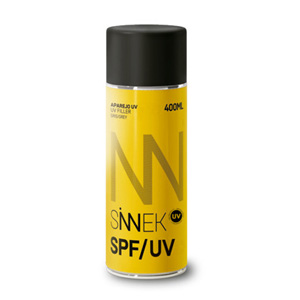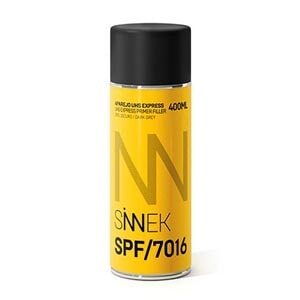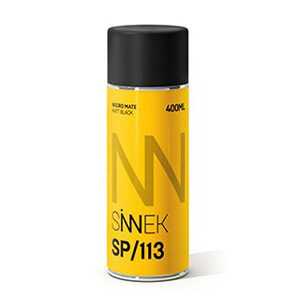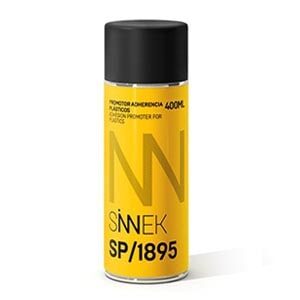
Car spray paint is a very useful resource that allows us to increase the productivity and profitability of some repair processes, as may be the case with partial repairs or spot repairs.
However, to make the most out of this type of products, as professionals we must be familiar with all the types of spray paints that exist and in which cases their use will be more suitable.
Advantages of using spray paints in bodyworks
It goes without saying that bodywork spray paint should be used as a supplementary resource in the day-to-day work at the bodyshop.
The spray should be used as a resource that can supplement certain repairs
Car spray paints provide a number of advantages to consider in certain repair processes, such as, for example:
- Reduction of repair time: they allow us to reduce the time spent in small repairs, such as touch-ups or painting of small surfaces and spot repairs.
- Quality of finish: the quality of spray paint is improving each day, which favours the achievement of good finishes for partial repairs.
- Ease and speed of application: it is a fast and convenient application format especially in repairs such as:
- Covering of bare metal.
- Applying primer on small plastic surfaces such as bumpers.
- Applying gravel guard paint.
- Etc.
- No cleaning of tools or equipment required: this helps us to reduce the time spent cleaning tools and materials (guns, containers, etc.).
- Fast drying compared to some standard 2-component paints. This allows for improved repair flow and productivity in the bodyshop.
Types of car spray paint
There is a variety of types of car sprays, intended to cover the complete repair process in the bodyshop.
At a first level we can differentiate between 1-component car sprays (1K sprays) or 2-component sprays (2K sprays).
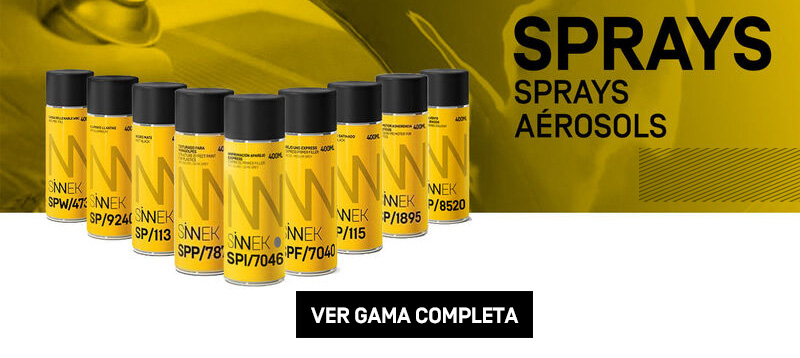
1K sprays are a type of product that is used for small surface repairs and touch-ups. They provide good results on surfaces that are not exposed to weathering, such as filler paint, primers for plastics, bumper texturing, etc. It dries by contact with air.
2K car sprays, on the other hand, provide the speed and convenience of one-component sprays, while providing a higher quality finish and durability. They have a hardener, which when mixed with the paint, causes the activation of the paint.
On a second level, we differentiate between the types of car sprays according to the type of paint and repair process:
Spray Fillers
One of the first types of paint to make the leap to spray format. It is a product that is widely used in bodyshops and paint shops, mainly for sealing and covering overcuts, small areas of bare metal or plastic, etc.
They dry very fast, show good adhesion between coats and are easy to apply. An example of this type of spray is the FILLER UHS EXPRESS SPF/ or the PRIMER FILLER SPI/ EXPRESS SPI/.
If we want to maximize the productivity of the repair, reducing the drying time to 30 seconds, we can use the SPF/UV PRIMER FILLER. A perfect solution for partial repairs without part replacement.
Spray adhesion enhancer
The adhesion enhancer spray is intended to optimise adhesion in small areas in partial repairs of plastics, such as bumpers or exterior mouldings. SINNEK’s SP/1895 spray enhancer can be applied on different types of plastics (PUR, PS, PA, EPDM, ABS, PVC, GRP, etc.).
Textured bumper spray
This spray paint has been specially formulated for touch-ups of vehicle bumpers. It has a finish that resembles the original textured finish.
SINNEK’s SPP/ textured spray can be used as an anchoring primer for plastics with excellent adhesion.
Car spray primer
An example of this type of product is the UNIVERSAL PRIMER 1C SP/7006designed for touch-ups or small repairs, where the substrate has been reached.
It can be applied on different substrates such as steel, electrogalvanised, aluminium and galvanised. It also provides good adhesion on different plastics such as PA6, PVC, MA, PC, ABS, GRP.
Aluminium finish wheel spray
An excellent option when we need to make a quick repair on a wheel with aluminium colour finish, one of shades that is most used in this type of parts. SP/9240 ALUMINIUM WHEELS.
You can see how to apply it in our tutorial on wheel painting.
Matte or satin finish black spray
These are two types of car sprays that are specially designed to be applied on plastic surfaces, emulating the matte or satin finish of some bumpers, grilles or side mouldings. As an example we find the SP/113 (matte black) or the SP/115 (satin black) sprays.
Refillable spray
As a supplement when applying the finishing paint, we have refillable sprays that allow us to formulate any existing colour.
It is recommended only in applications on small superficial flaws, and not in the whole parts.

Conclusion
Car spray paints have increased their relevance in the bodywork and paint industry over the years. Although their use is limited to certain surfaces, they can be an especially useful supplement to reduce repair time and improve workflow in the bodyshop.



